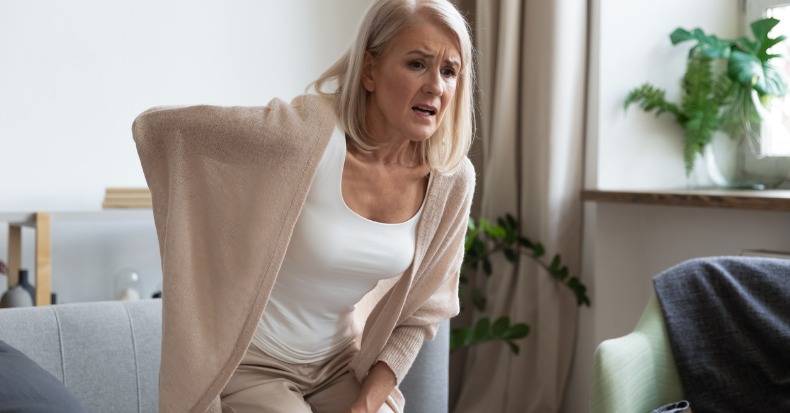This article is part 2 of a 2 part series. For Part 1, click here.
Last month, we started this series on low back pain (LBP) in the geriatric population, and we discussed osteoarthritis (OA) and degenerative disk disease (DDD). As reported last month, this group of conditions often co-exist in this population, so we will continue this discussion this month…
A unique condition associated with OA and DDD is called “spinal stenosis” (SS). Stenosis means “narrowing,” and it applies to two locations in the spine: 1) the holes through which the nerves in our neck and back exit out of the sides of the spine (called “intervertebral foramen” or IVF); and 2) the “spinal canal” through which the spinal cord travels. When narrowing occurs on the sides of the spine where the nerves exit, it’s called “lateral spinal stenosis.” When the spinal canal narrows, it’s called “central spinal stenosis.” Our spinal cord starts up in the neck as an extension off the brain stem and usually ends at the junction between the middle and lower back (around T12/L1) with the “cauda equina” (which literally means, “horses tail”) and extends downward. The cauda equina is made up of many nerves that travel down and exit out the sides of the lumbar spine (through the IVFs) and sacrum (tail bone) and transfer information (motor and sensory) to and from our legs and brain. When the size of the canal through which these nerves travel close down or narrow enough, sufferers will initially start feeling vague symptoms of leg heaviness or fatigue after walking for 30 or more minutes. As years pass and the IVFs or central canal become gradually more narrow, it may get to the point where a person can only walk a short distance because their legs, “…just won’t move.” A classic complaint of SS is only being able to walk for four to five minutes prior to needing to sit down for 30 seconds to a few minutes (usually five minutes at the most) after which time the leg complaints resolve and the process repeats itself. When the nerves are compressed in these tight canals and the legs become heavy and hard to move, the term “neurogenic claudication” is used. Another “classic” finding of SS is that RELIEF occurs when the patient bends forward, such as on a grocery cart or simply stopping and bending over can be immediately relieving in many cases.
Chiropractic adjustments and other techniques are often very helpful in these cases if it is not too far advanced. The good news is that it usually helps, so prior to considering surgery or injections for this, give chiropractic a try—it’s less invasive and safer. Your doctor of chiropractic can always refer you to the next step if the condition becomes too advanced and/or if the results become less satisfying.
Compression fractures are another common cause of back pain in the elderly population. They’re often caused by minor trauma in the presence of poor bone density (osteoporosis) which accounts for about 700,000 of the 1.5 million osteoporotic fractures. Interestingly, many patients do not know what they did to cause these fractures so only 25-30% actually go to doctors and have this positively diagnosed (by x-ray). Treatment varies depending on what the percentage of fracture occurred (a little vs. a lot), and in unstable cases, a procedure called kyphoplasty (where cement is injected into the collapsed vertebral body) may be appropriate. Chiropractors can help this population by offering nutritional counseling to improve bone density and often provide symptomatic relief with adjustments (low force types) and other modalities.
